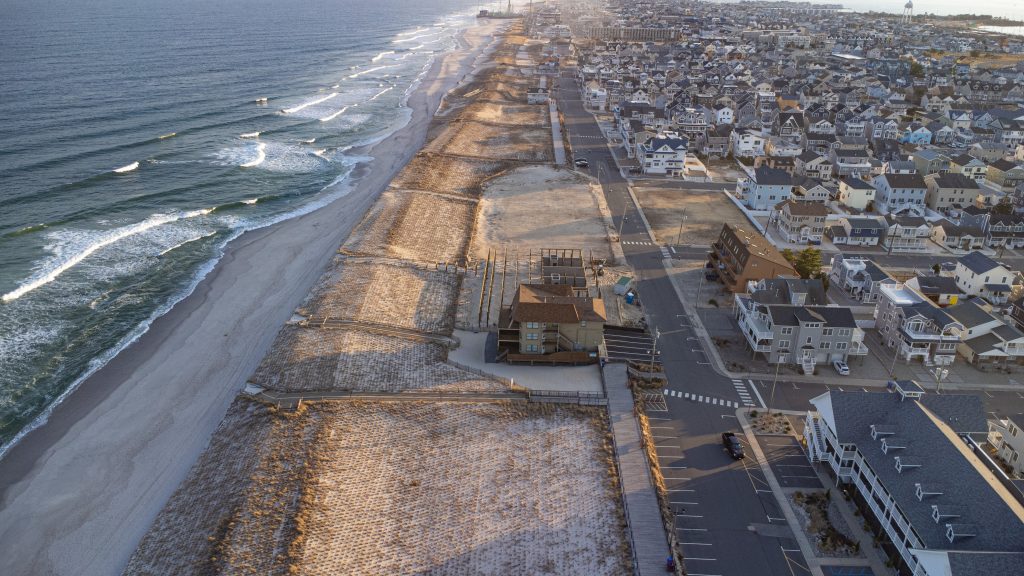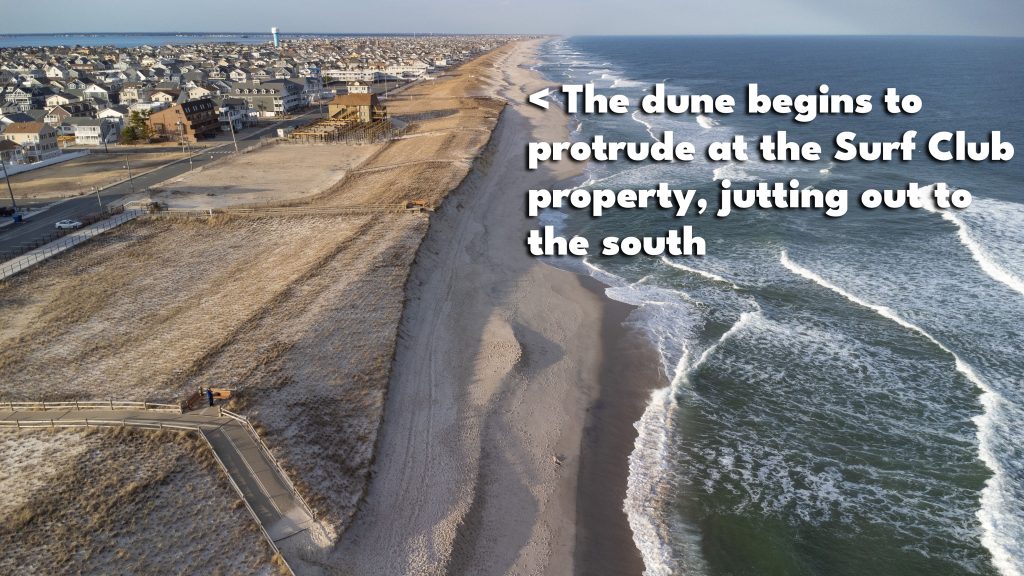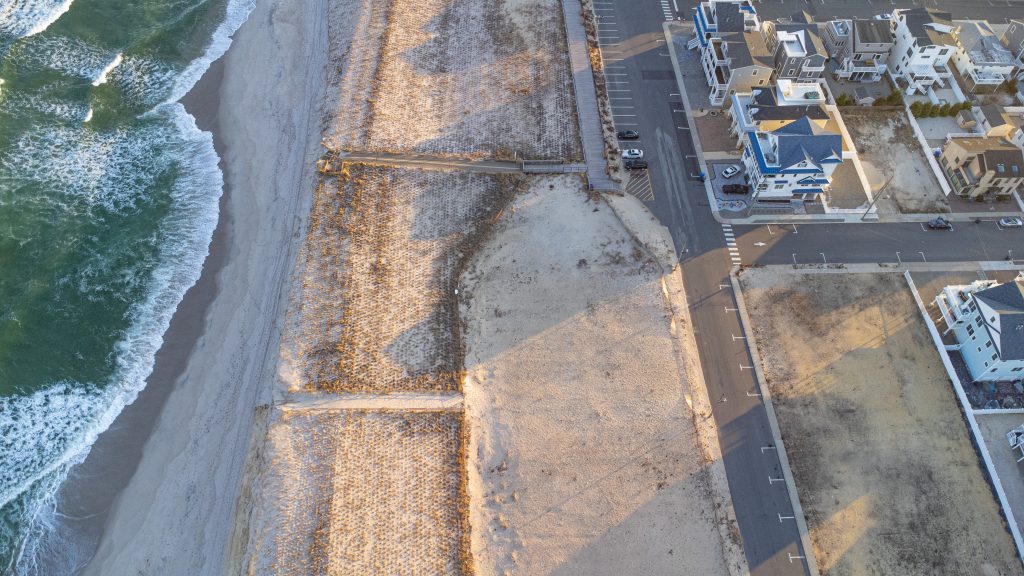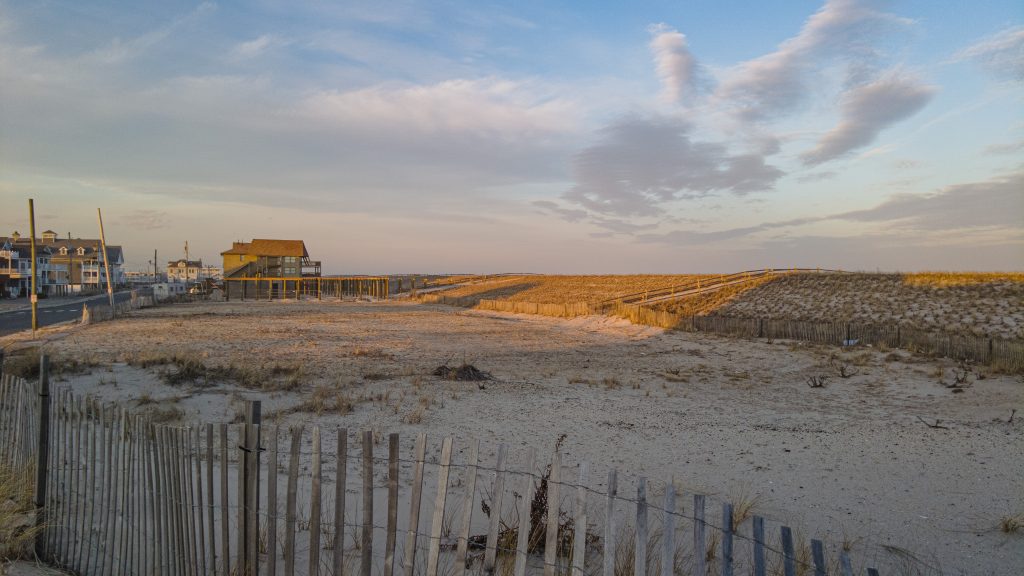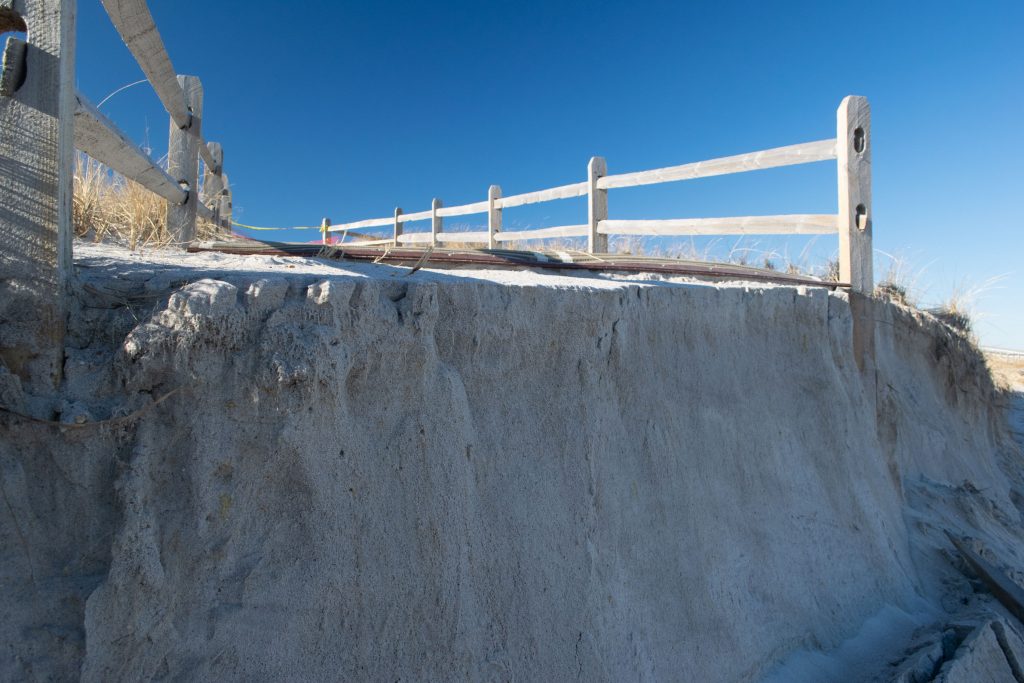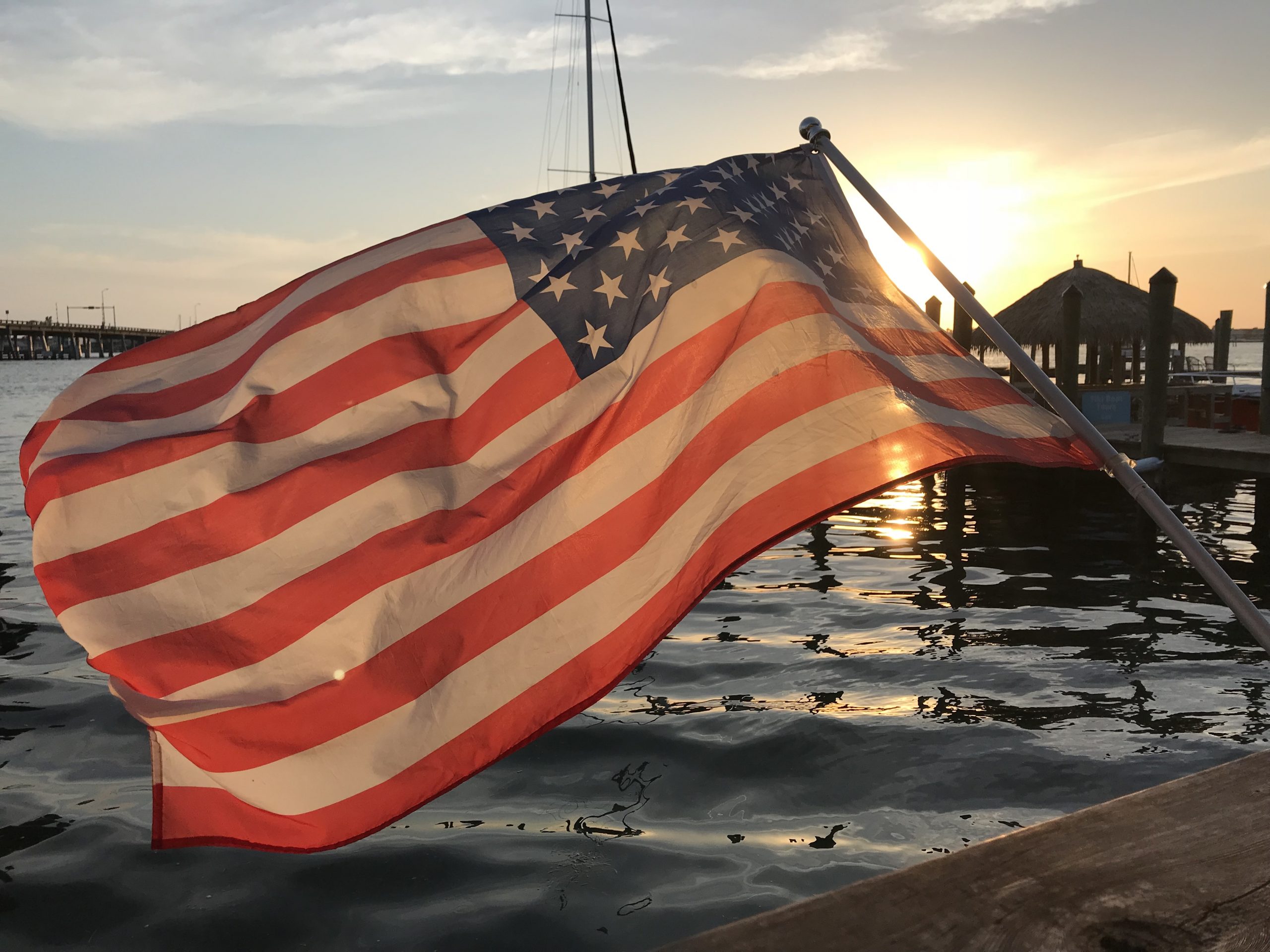Ortley Beach has experienced the unfortunate reality of being labeled Superstorm Sandy’s “ground zero” in 2012, and since a major beach replenishment project was completed in the years following the hurricane, nature has chipped away at the neighborhood oceanfront to a greater extent than any neighboring community.
While the protective dune itself has largely held up – it has never, remotely, been in danger of breaching as it was during Sandy – Toms River Township has found itself repeatedly having to truck in sand, repair beach entrances and replace pieces of infrastructure damaged by seemingly every nor’easter to make its way up the coast. The photos and videos tell the what, but the why is rarely discussed.
With a new round of replenishment expected to begin later this year, known as renourishment, officials have pledged to re-engineer the beachfront to improve its resilience during storms. As those officials communicate behind the scenes in anticipation of the project, details have emerged as to why Ortley Beach’s replenishment project has faltered and how it will be fixed.
As the next project is designed, the U.S. Army Corps of Engineers have poured over data and taken surveys of the oceanfront to determine weak points and decide how to eliminate them. The primary weak spot, it has emerged, is the area where the former Joey Harrison’s Surf Club property was located, as well as the condominiums that are now being rebuilt on the adjoining property. The Surf Club property has been acquired through state Blue Acres funding, and township officials are engaged in negotiations with Trenton on how the land can be used. Changes to this area of the beachfront will likely make up a central part of the improvements that are planned.
Township officials have communicated their federal counterparts’ findings to local residents, primarily through the Ortley Beach Voters and Taxpayers Association, an active group of advocates who have earned significant influence thanks to their willingness to lobby, and pay, for improvements to their neighborhood. The group recently met and held a discussion on the replenishment project, gaining a closer look into how the re-engineering effort will play out.
“For the upcoming periodic nourishment, we will be placing sand across most of the project area with a focus on the areas that have experienced the most erosion,” Stephen Rochette, public affairs officer for the Philadelphia district, previously told Shorebeat. “In this sense, it will be somewhat different than the initial construction.”
The primary focus area will be the swath of sand between 4th and 7th avenues. As illustrated in the video embedded with this story, as well as the photos here, there is a major deviation of the dune line where the Surf Club property was located. While the dunes north and south of the area back up to the boardwalk, the dunes come to an abrupt end near the location of the once privately-owned property. As a consequence, the front of the dunes that face the ocean jut out a bit farther in order to compensate, and maintain an equal width. But that, it is believed, is where the problems begin.
The position of the forward-facing dunes has resulted in some dune damage in the areas between 4th and 7th avenues, acting similarly, in some sense, to how jetties and rock groins shift sands elsewhere. Since the waves generated by storms are blocked by the outward dune line, the sand erodes quickly as water envelopes the areas to the north and south. The momentum of the waves is stronger in the middle, causing the breakers to smash against the protective dune, taking beach entrances, matting, fencing and other features with it.
The renourishment plan, as it currently stands, seeks to even out the dunes and add significant sand to the beach berm (the berm is the area in front of the dune where beachgoers set up their chairs and blankets) in order to cut down on the wave energy and preserve the width of the beach. Indeed, during the initial project, some of the sand was expected – and designed – to be taken out to sea, where it formed a bar that acts as “sponge” to soak up some of that energy. But without a large enough berm, the system does not work as intended.
The Army Corps has communicated to the OBVTA that the dunes from approximately 4th Avenue to 7th Avenue would be pushed back approximately 25 feet to build the dune line into a straight line from one end of Ortley Beach to the other. Furthermore, officials have said the contractor hired to pump sand onto the beach during the renourishment effort will pump a significantly-greater volume of sand onto that portion, making the berm much larger than what was known as the “design width” in planning documents. This extra width will compensate for any natural or man-made protuberances, and even when some sand is inevitably taken out to sea to form the bar, the beaches are expected to be maintained at a reasonable width.
The renourishment, to beachgoers, will initially appear to have made the berm much wider than even what was seen in the early days after the first project was completed.
“This time, the Army Corp of Engineers will be pumping wider than the designed width, with the anticipation of not as much beach/berm being lost as a result of the second replenishment,” Anthony Colucci, the OBVTA president, wrote in a recent letter to members.
The Army Corps will also be paying extra attention to the slope of the beach in order to ensure that wave energy is distributed upon an even scale.
“We attempt to mimic the natural slope as closely as possible knowing that Mother Nature reworks the nearshore area relatively quickly,” said Rochette. “Some of our other beachfill projects in New Jersey are much older (decades in some cases) than the Barnegat Peninsula project, so we know that it often takes multiple nourishments to provide for more stable beaches.”
The Army Corps will also be focusing on trouble spots in Normandy Beach and Bay Head, both of which have suffered significant erosion – though not at the rate of Ortley.
Last month, local municipalities received news from the Ocean County Board of Commissioners that the county would pay the entire “local share” of renourishment costs. Toms River had been slated to pay $1.9 million toward its share of the project, which would have been funded by municipal property taxpayers. The overall project is estimated at $60 million. The U.S. Army Corps of Engineers will pay $30 million, with the remaining $30 million coming from the state and local share.


Police, Fire & Courts
Toms River Police Catch Well-Known Suspect Attempting to Burglarize Vehicles

Police, Fire & Courts
Fatal Toms River Hit-and-Run Results in Charges Against Local Man, 68

Police, Fire & Courts
Foursome Accused of Dismembering Body Following Murder of Toms River Man

